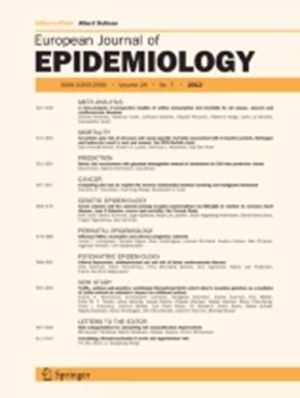西班牙儿童血液肿瘤的生存趋势和治愈率。
IF 5.9
1区 医学
Q1 PUBLIC, ENVIRONMENTAL & OCCUPATIONAL HEALTH
引用次数: 0
摘要
血液学肿瘤(HN)是西班牙5-9岁儿童死亡的首要原因。这项基于登记的研究的目的是提供HN在西班牙儿科人群中生存的详细概述。所有纳入的儿童HN病例均根据国际儿童癌症分类进行分类。灵活参数模型用于估计生存概率和长期生存预测。以年平均生存变化(AAC_S)评价生存趋势。潜在治愈模型用于估计治愈分数(CF)。2000-2016年,西班牙共诊断出4706例HN,其中2850例(60.6%)为男孩。白血病和淋巴性白血病(LL)是儿童HN最常见的类型和亚型。HNs的总5年生存率为84.3%[95%可信区间(CI): 83.3, 85.3]。年龄< 1岁的急性髓性白血病(AML)或骨髓增生异常综合征患儿预后最差。随着时间的推移,所有HN的AAC_S均有改善,为0.71% [95% CI 0.50, 0.91],其中AML和Burkitt淋巴瘤的改善最大。HNs显示CF为83.8% [95% CI 82.4, 85.3],最高的CF在霍奇金淋巴瘤中接近100%。更大的人口覆盖率和更新的数据使西班牙的结果与其他欧洲国家的结果一致。治疗、患者护理和更好的诊断方法的不断改进表明,儿童HN亚型预后不良的生存率提高最高。本文章由计算机程序翻译,如有差异,请以英文原文为准。
Survival trends and cure rates of hematological neoplasms in the Spanish pediatric population.
Hematological neoplasms (HN) were the first cause of death in children aged 5-9 years in Spain. The aim of this registry-based study is to provide a detailed overview of the survival of HN in the Spanish pediatric population. All pediatric HN cases included were classified according to the International Classification for Childhood Cancer. Flexible parametric models were used to estimate survival probabilities and long-term survival projections. Survival trends were evaluated with the annual average change in survival (AAC_S). Latent cure models were used to estimate cure fractions (CF). A total of 4706 cases of HN were diagnosed in Spain during 2000-2016, for which 2850 (60.6%) were boys. Leukemias and lymphoid leukemias (LL) were the most common type and subtype of HN in children. An overall 5- year survival of 84.3% [95% confidence intervals (CI): 83.3, 85.3] was observed for HNs. Children aged < 1 year with acute myeloid leukemia (AML) or myelodysplastic syndrome had the worst prognosis. An improvement over time was observed for all HN with an AAC_S of 0.71% [95% CI 0.50, 0.91], of which AML and Burkitt lymphomas displayed the greatest improvements. HNs revealed CF of 83.8% [95% CI 82.4, 85.3], with the highest CF being nearly 100% in Hodgkin lymphomas. Larger population coverage with updated data have aligned the Spanish results to those observed in other European countries. Continuous refinements in treatments, patient care and better diagnostic methods have revealed the highest survival improvements for HN subtypes with bad prognosis in children.
求助全文
通过发布文献求助,成功后即可免费获取论文全文。
去求助
来源期刊

European Journal of Epidemiology
医学-公共卫生、环境卫生与职业卫生
CiteScore
21.40
自引率
1.50%
发文量
109
审稿时长
6-12 weeks
期刊介绍:
The European Journal of Epidemiology, established in 1985, is a peer-reviewed publication that provides a platform for discussions on epidemiology in its broadest sense. It covers various aspects of epidemiologic research and statistical methods. The journal facilitates communication between researchers, educators, and practitioners in epidemiology, including those in clinical and community medicine. Contributions from diverse fields such as public health, preventive medicine, clinical medicine, health economics, and computational biology and data science, in relation to health and disease, are encouraged. While accepting submissions from all over the world, the journal particularly emphasizes European topics relevant to epidemiology. The published articles consist of empirical research findings, developments in methodology, and opinion pieces.
 求助内容:
求助内容: 应助结果提醒方式:
应助结果提醒方式:


